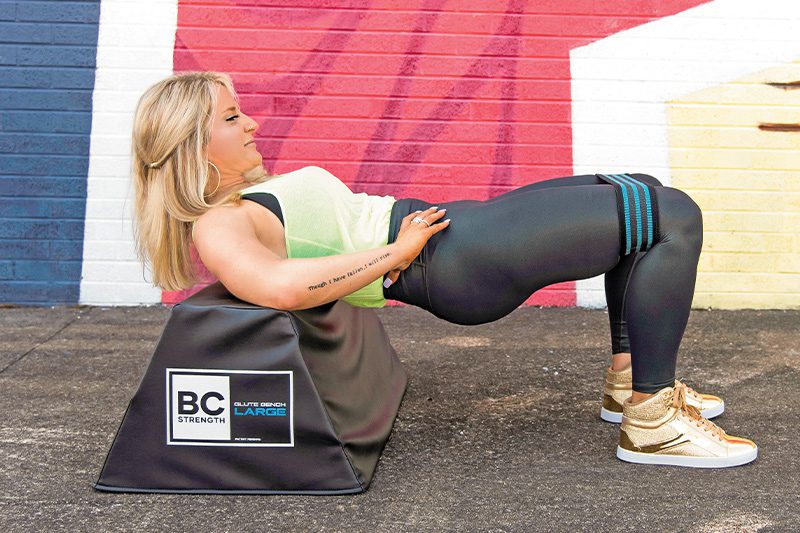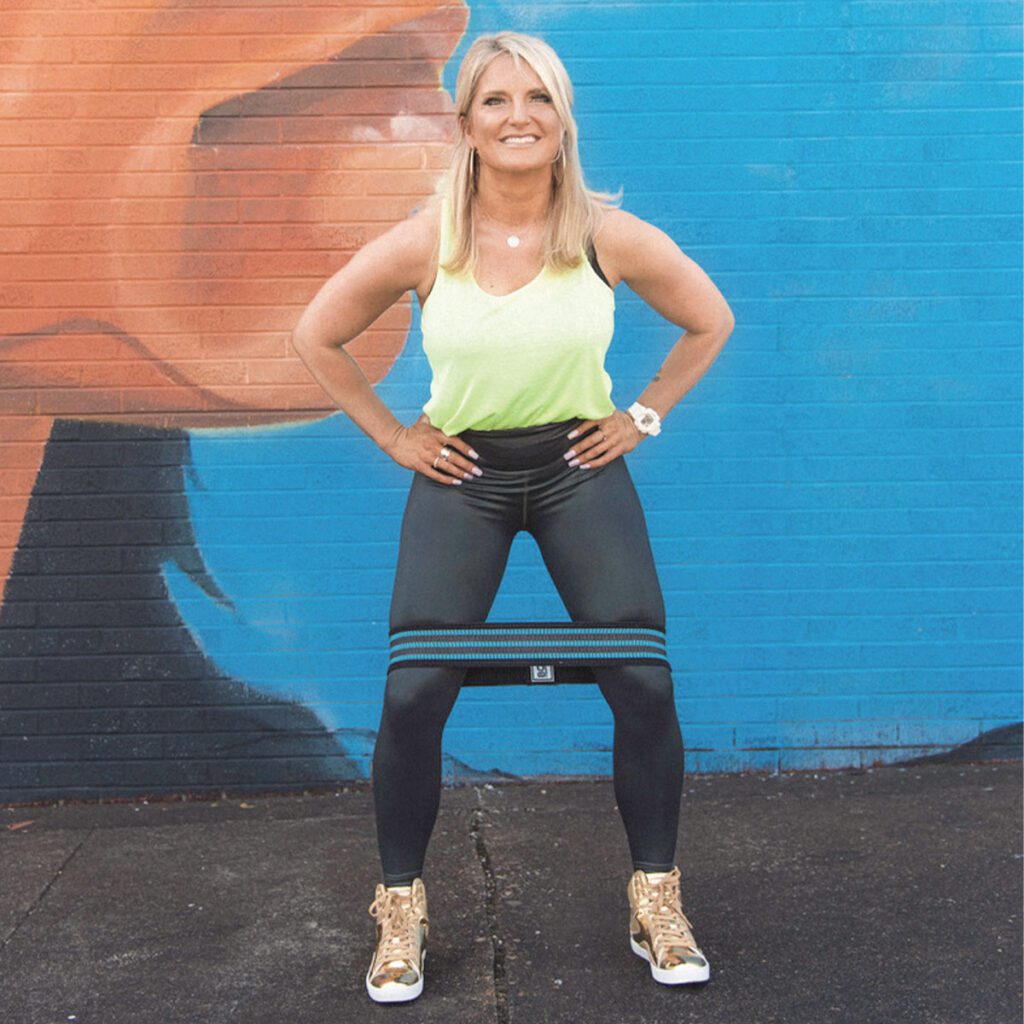An At-Home Workout

Why are glute exercises so important? We spend a lot of time sitting during the day! This constant disuse and pressure can create atrophy in the gluteal region. Strengthening your glute muscles can not only enhance your athletic performance, it can also serve as injury prevention – especially as it relates to lower back pain. Here are five exercises you can start implementing in your daily routine, either at home or at the gym!”
Karisa Kaye, CrossFit Level 2 Trainer; Head Trainer at The Hangar
Hip Thrusts
Find a bench or an elevated surface (couch, sturdy chair) to back up to. Place both feet flat on the ground, hip to shoulder distance apart. Shoulders should be resting comfortably on the elevated surface behind you, with your tailbone backed in close to the fixture as well. Bring your heels in toward your buttocks; you’ll want to push through your heels and avoid rising up onto your toes. Tuck your chin into your chest and look forward. Press your hips and pelvis up to the ceiling, squeezing your glutes and your hamstrings on the way up. Try to reach full hip extension at the top. Find a smooth tempo to move your hips up and down as you complete 15 to 20 reps for a total of three sets. Hold the last rep of each set, for three to 10 seconds, at the top of full hip extension – this will give you a chance to check in with your body position and correct your form if needed.


Bulgarian Split Squats
Using the same elevated surface, place one foot behind you and one foot forward. The foot forward should be flat on the ground. The foot behind you should have your toes pressed into the surface. The distance you step out away from the elevated surface will depend on the length of your legs. It’s okay for your knees to go over your toes in this movement. Start standing upright, and gently place your back leg/knee to the ground, squeezing your glutes on the way down and squeezing your belly in to keep your core engaged. As you stand back up, squeeze both sets of glutes as well, and keep your core tight. This should feel like a scissor movement. Complete three sets of 10 to 15 reps per leg.
*If you want to intensify this movement, you can hold a dumbbell or kettle bell in one or both hands for added resistance.
Sumo Deadlifts
For a starting position, feet should be wider than shoulder-width apart. Think of standing like a sumo wrestler. Both feet are flat on the ground with your weight distributed into your heels.
Place a kettle bell or a dumbbell, or any heavy household item you can grip, between your feet.
Sink down into a wide squatting position, with your head and chest up, shoulders pulled back, and hips down. Grab a hold of your weight of choice with both hands; keep your shoulders pulled back and your belly button pulled into your spine.
Stand straight up, squeezing your glutes and your legs.
Then allow the weight to sink back down to the ground to the starting position.
Depending on the weight, you will want to complete 15 to 20 reps of this movement, three times.
High Step into Diagonal Reverse Lunge
Return to your elevated surface of choice. You may need a wall or a partner’s hand to hold onto for balance with this movement.
Choose one leg to step onto the surface with, and the other leg you’re going to step up high with.
Try and bring your knee up to your belly button or chest.
As you return the high-reaching leg to the ground, you’ll step backwards at a diagonal into a reverse lunge.
This will take a lot of focus and balance. Try to complete eight to 10 reps per leg.
After lunging diagonally behind you, step back up into the high position and continue for eight to 10 reps.
Hip Abduction Walks
Place a resistance band just above your knees, which should be slightly bent.
Step to the side, one step at a time, keeping the movements controlled and stable. (I prefer 10 reps in one direction and then switch to the other direction.)
You should feel tension in your hips and the outside of your leg.
Be careful not to lock your knees at any point; keep your abdominal muscles tight as well.
*Another option: You can walk forward or backwards with the band. Walk at an angle, keeping resistance around your legs and hips. Do as many repetitions as possible until you’re fatigued or your form begins to fail.



